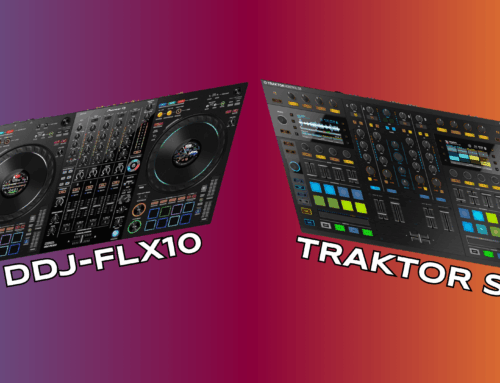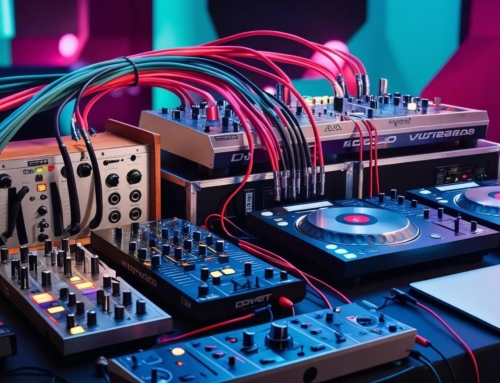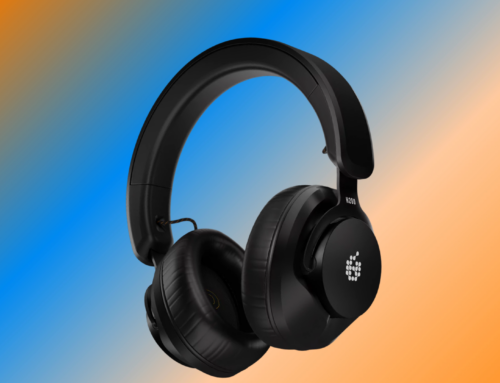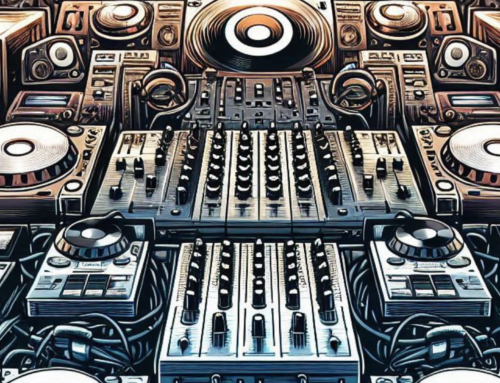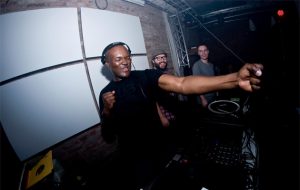 To those in the U.S., dubstep is synonymous with Skrillex. But Skrillex, on the global scale, is only a small facet of dubstep, and the genre has a far more expansive palette of sounds and players, particularly in the U.K. While not a producer, Joe Knights, better known as Joe Nice, has been an ambassador of dubstep in the U.S. Since first hearing the genre 10 years ago, he started internet radio show GourmetBeats.com and New York club night Dub War. Currently, he performs on both sides of the Atlantic, including for London’s DMZ.
To those in the U.S., dubstep is synonymous with Skrillex. But Skrillex, on the global scale, is only a small facet of dubstep, and the genre has a far more expansive palette of sounds and players, particularly in the U.K. While not a producer, Joe Knights, better known as Joe Nice, has been an ambassador of dubstep in the U.S. Since first hearing the genre 10 years ago, he started internet radio show GourmetBeats.com and New York club night Dub War. Currently, he performs on both sides of the Atlantic, including for London’s DMZ.
Crossfadr: Tell me about your background in playing dubstep. How did you start spinning and producing this particular style?
Joe Nice: I got started probably, gosh, about 11 or 12 years ago through U.K. garage, and liked what I was hearing but I needed something a little more heavy, but then but I was really more interested in the great big sound of garage, and after that, that’s when the garage sound really evolved into dubstep, and that’s kind of where my heart, musically, traveled to. I’ve been playing dubstep religiously for about 11 or 12 years now.
Crossfadr: Dubstep has taken off in the U.S. over the past few years. How has this affected your career?
Joe Nice: It has certainly opened up a lot more markets, a lot more places to play – there has been a lot more expansion of the sound, a lot more producers that create their own take on what they think is dubstep. And it has opened up the doors, it has expanded the boundaries of what people think dubstep actually is. The great different is the sound between what you hear in the U.K. and what you typically hear in the U.S. But, in my mind, good music is good music, regardless of where the music is created.
Crossfadr: Where do you think dubstep will go, in terms of popularity, in the U.S.?
Joe Nice: I think, dubstep, you have to understand, Irene, is a relatively new genre – you’re talking a genre that is essentially club music that is a little bit older than that, but it doesn’t nearly have the history of a lot of other genres of music – for example, drum and bass or house, techno. Those genres have, especially with house, those genres have roots that extend almost to 30 years. If you look through a lot of – of my gosh, what’s that guy’s name – Jellybean Benitez and Madonna records – we’re talking 1979, 1980. So house extends at least that far, maybe even to the disco Studio 54 days. So, dubstep, as a sound, is relatively young to, relatively speaking, other genres of electronic dance music. And, as a result, there’s less listening than other genres. But with popularity, the reason why is because it doesn’t sound like other genres of music. It’s much more heavier than other genres, and it’s at a different tempo – 140 beats per minute – so, it’s not as rhythmically intrinsic as house music is at 120, typically, or something like drum and bass, at 174, but you typically push it to about 180. But, dubstep is at that weird tempo – actually, it’s at a very different tempo of 140 BPM, where it feels like it’s slow, but it’s moving music faster. So, as a result, when you feel a certain beat that’s not in your body, you have a tendency to move a certain way to it, and dubstep, at times, confuses the body, because you think, “Do I stomp my feet? Do I dance real fast? Do I nod my head?” And, that’s the difficulty dancing to dubstep, but then, your mind doesn’t compute what the body tells it to do. For me, dubstep is the feel of the music, and to feel the music dance inside of you, and that’ll tell your body whatever it needs to do.
Crossfadr: How did Dub War come about?
Joe Nice: We really haven’t done Dub War in over two years, so we stopped doing Dub War in June 2010. We started in June 2005. Dave Q and I, actually, we virtually met online on a site called dubplate.net. He was playing was playing a lot of dub and reggae and dubstep in the New York City area, and he met me because I was playing some shows here and there. We went to New York City, to a dubstep party, but then, we heard no dubstep. So, later on, he contacted me, saying, “I want to start up a dubstep party,” I was like, “Cool. Let’s do it.” So, we started the dubstep party in Brooklyn, back in 2005, and a total of 30 people showed up. But, it wasn’t a discouraging 30. It wasn’t like, “Oh my God. Only 30 people showed up. What’s going on here?” It was, “Oh my gosh, wow, we have 30 people to come out and hear dubstep.” It wasn’t 30 people and 10 of them were hanging out with their friends after work or happy hour, or anything like that. It was 30 people that were there to hear dubstep on a larger sound system. Or at least, larger than what they have. And after that, the momentum just started building. We were encouraged by the people that showed up, but what was bigger than the amount of people was spirit. We knew there was something very special that night that was not going to last for one night or one month or two months or a year. We had a feeling that this is going to be something big and profound. And, for five years, every month, we did it, and we shifted the lineup to stay ahead of the musical curve. We always tried to make sure we brought people in that, six months from now, you’d go, “Oh yeah, I remember when Dub War booked them six months ago.” We really wanted to be forward thinking in terms of who we booked but not so forward thinking that we were alienating the people that were consistently supporting the party: “Hey yeah, sure we got a popular headliner, but hey, take a listen to this other person.” In a few months, you’ll hear what they’re talking about. And, we had a tendency to pick the right people, with regards to that sort of criteria also, and for five years it was magic. For five years, it was pure magic. There are a lot of special memories, and a lot of special times, and the guys that participated in the parties consistently – me, Dave, Juakali, Incyde – I’m proud that I spent one day a month for five years with those guys, doing that party, because it was a really special time in my life. And it was a really special time for a lot of other people that attended the party and came to it.
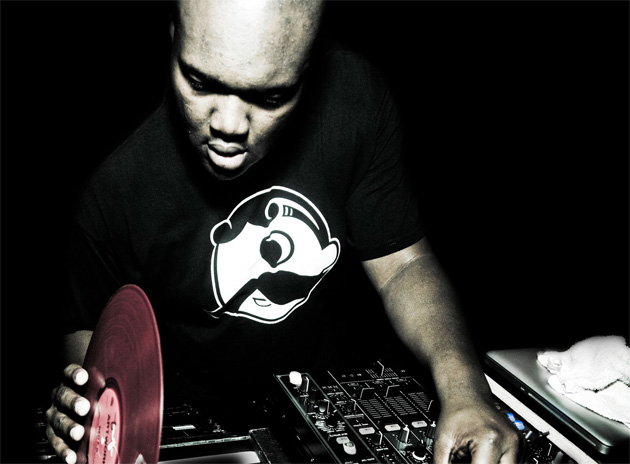
Crossfadr: How did you start your radio program?
Joe Nice: So, anyway, we were talking about a radio show, and I said, “Okay, let’s do it.” So, we would always play the first Tuesday, but in September, Monday was always a bad radio for radio, because people are either watching wrestling or Monday Night Football or both. So, Monday’s not a good night. We wanted a night in which people are usually home, the bars are open. So, I would always take the first Tuesday. An old friend of ours took the second Tuesday, and I took the third Tuesday. For, a long, long, long time, I would always play the third Tuesday of every month. More people started recognizing, “Okay, this guy’s doing a dubstep radio show. It’s really interesting. It’s really different.” And, we’re talking 2003, more people started listening to my radio show, and the downloads and everything else, really started gaining momentum. Internet radio has been a very big thing for me, because it has now really allowed me to play the kind of music that I feel like playing, but it has also allowed me to push and promote producers that a lot of other DJs may not necessarily feel comfortable playing. So, it has allowed me to push people, and now say, “Okay. I like it. You might not hear it at DMZ, but you’ll hear it on my show.” And, as a result, a lot of producers have consistently sent me music, because they know, on my show, they have an opportunity to be heard more wide. And, it has been a great relationship between the producers that have trusted me with their music and the radio show.
Crossfadr: Your Wikipedia page mentions you play tracks by lesser-known producers. How do you come across these producers?
Joe Nice: A lot of them just contact me, because, now, I’ve been doing radio almost 10 years next year, December 2003, so a lot of people know where I am and how to find me online, or on Facebook, or on the internet. And, they have tracks to send to you. And, I, honestly, get about, between web files and MP3 file, three gigabites of music a week. That’s a lot of music per week. I spend quite a bit of time listening to music. It’s never a chore, because I enjoy listening to music. It’s even less of a chore when I find music I feel I want to play not only on the radio but in a club or at a festival or another outdoor venue. Or indoors, for that matter. Good music is good music, as far as I’m concerned.
Crossfadr: What’s your approach to putting together a setlist?
Joe Nice: I guess the first thing is, try not to be repetitive. With the stuff I put on the radio, I do it once a month. I always try to make sure I consistently have fresh music all the time with my radio shows. So, when we’re doing a radio show, when I’ve got music, that’s three or four or five months. So, I try to have consistently fresh music, because I’m not only a DJ but I’m also a listener of music, so, for me, what I enjoy listening to is always hearing fresh stuff and stuff I may not necessarily hear anywhere else. So, the other thing, about DMZ, there are certain things that we’ll play, and a lot of times, on my radio show, I’ll hold back, because I want them to be played live. You can’t always play all these tunes on radio. You’ve got to give something back. At the same time, I enjoy playing a lot of tunes that you would heard in DMZ, but when I’m actually playing in a club setting, I usually play much less structured. There’s less of them I want to get into a set. It’s much more free-flowing. Radio, even though it’s still live in terms of what I’m going to play, I have an idea from what I’ve played last month from what I’m going to play this month. And I try to keep those piles of music separate from each other. When I’m playing live, at DMZ or a party or whatever, anything and everything goes. It doesn’t matter if you hear it last on the radio; you’ll hear it this month at a club. Radio is more of a concentration of the tunes I select to be played; a party is much more wide open.
Crossfadr: During your career, how has your setup changed?
Joe Nice: For me, it’s always been the same. I’ve always been a vinyl record guy when I tried playing dubplates, and I’ve been playing dubplates ever since. I’ve never been somebody that started out on turntables and transitioned to CDs, then kept with CDs, and then transitioned into Serato Scratch Live or some laptop or Ableton. I’ve never been that guy. I’ve always thought that music is always best represented in a vinyl format – an analog format as opposed to a digital format. When you’re dealing with something that’s digital, there’s no room for expression, there’s no room interpretation, there’s no room for anything. Everything’s very precise. And, it’s very rigid. So, it’s mutilated, and that’s it. With analog, there is no binary code, there is no zeros and ones, so there’s always that, sort of, roll that you hear on a record that adds something to the overall sound of the music, as opposed to something that’s digital – everything’s precise but not necessarily accurate. With regards to analog, analog isn’t necessarily precise, but it’s accurate in terms of the way the music is intended to be heard from the listener and the people playing.

